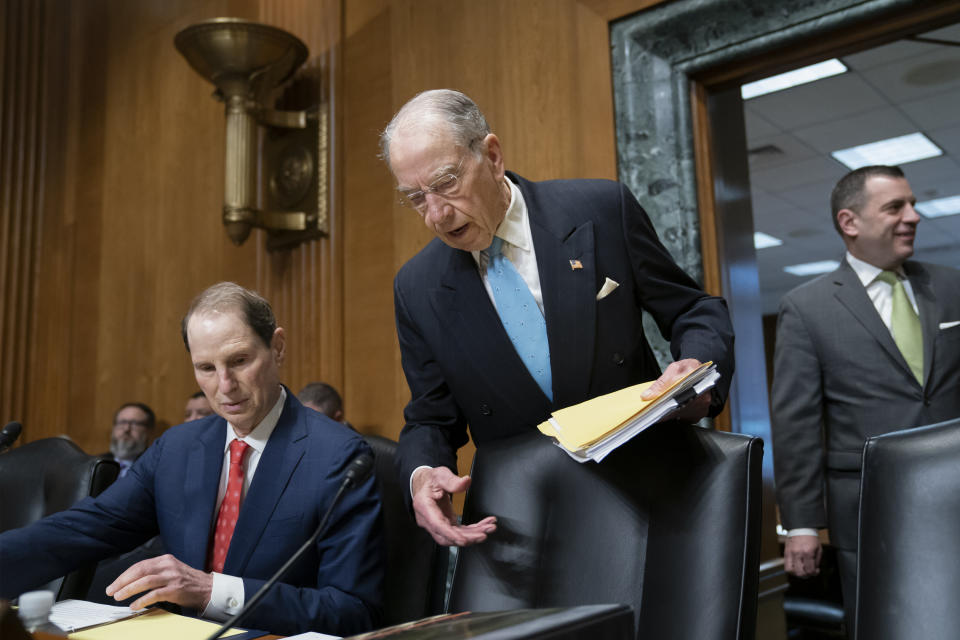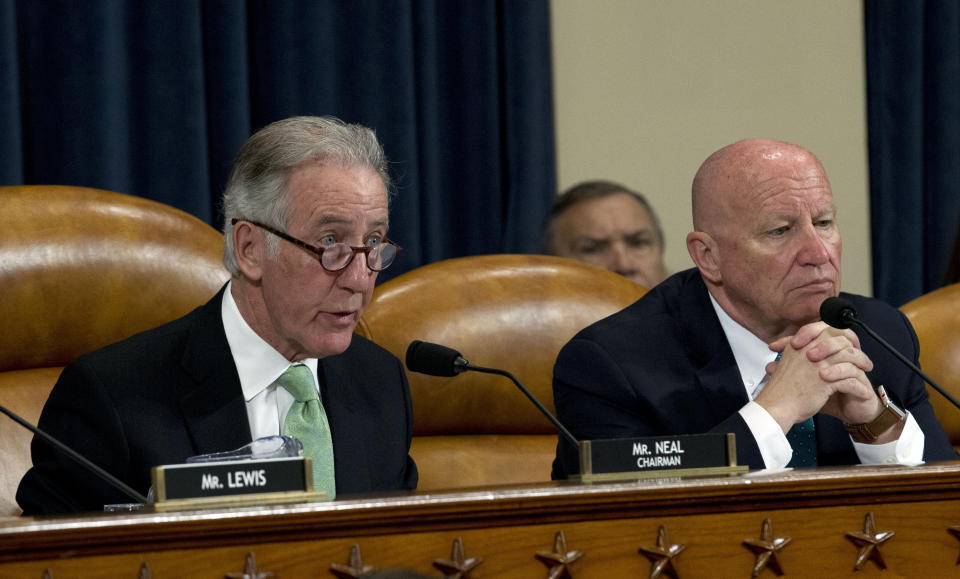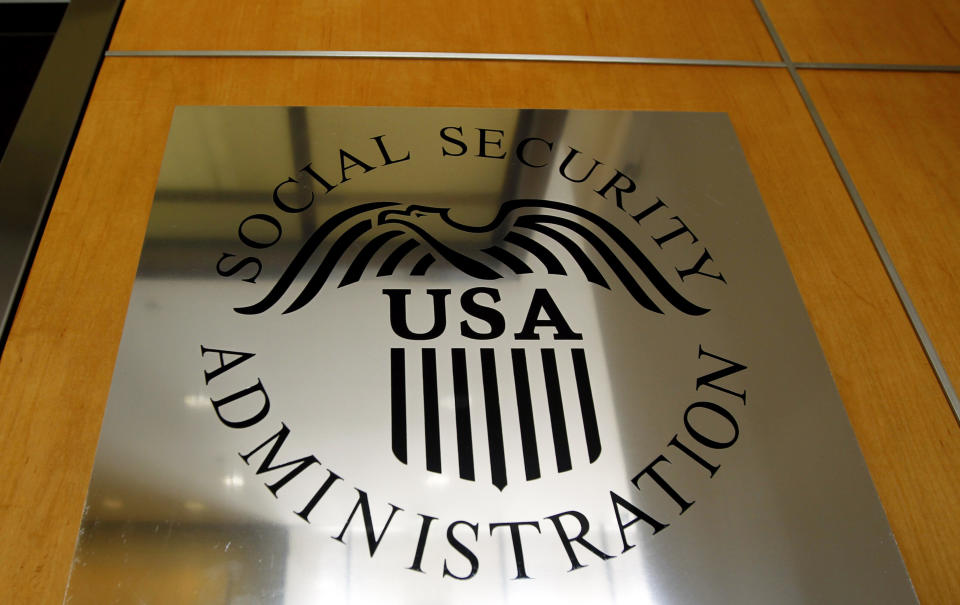4 ways Washington may soon change how you save for retirement
The House of Representatives on Thursday overwhelmingly passed the SECURE Act, which includes provisions to help people save for retirement. The bill passed 417-3 and is being sent to the Senate.
The 116th Congress will not be known for lack of tumult, but retirement is one issue that’s been moving methodically – and under the radar – towards becoming law. The House’s Secure Act may even be merged with another one from the Senate Finance Committee, and sent to President Trump's desk.
If lawmakers are successful, it would be the first major retirement legislation since 2006. Richard Neal, chairman of the House Ways and Means Committee, has noted that the bill “represents a major bipartisan accomplishment.”
"The outlook is very kind of ordinary and that's so extraordinary now," says Gordon Gray, a former Republican policy advisor in the Senate and now the Director of Fiscal Policy at American Action Forum. He added “we have our bill, the House has theirs and eventually it will get to conference. It's like how a bill becomes a law."
Among the changes in the House’s Secure Act is: getting more part-time workers to save for retirement, raising the age to begin required minimum distributions for IRAs, and helping small businesses provide 401(k)s to their workers.
Here are 4 of the key ideas likely to be included in the final package that might impact your savings.
If you work for a small business, you might get access to a 401(k)
The “centerpiece” (in Senate Finance Chairman Chuck Grassley’s view) of the reform concerns increasing access to 401(k) savings plans for small-business employees.
Trump signed an executive order in 2018 to encourage “multiple-employer plans” noting that only 53% of workers at small businesses are offered retirement benefits. The plans on Capitol Hill would go further and allow small business to join plans with companies in different industries, so-called “open” MEPs. According to a Senate Finance Committee summary, open MEPs will allow small businesses to “obtain more favorable pension investment results and more efficient and less expensive management services.”

Lawmakers on both sides are also pushing provisions to provide tax credits to small businesses to make it more affordable for them to set up their own retirement plans.
Another group of workers who might see increased access to retirement savings plans: long-serving part-time employees. There are provisions in the House bill for part-time workers. On the other end of the Capitol, Senators Rob Portman and Ben Cardin are pushing similar provisions. Their plan would allow part-time workers access to their company’s retirement plans once they work over 500 hours for two consecutive years.
You may be able to save for retirement while paying off your student loans
Another idea with support on both ends of Capitol Hill is a provision to encourage young people to save more. The idea is to allow employers to make matching contributions to an employee’s retirement account equal to the amount of their student loan payment. The proposal is included in the House plan and in a stand-alone Senate bill introduced by Ron Wyden, the ranking member on the Finance Committee.
A summary of the Wyden bill describes it working this way: "If a 401(k) plan provides a 100% matching contribution on the first 5% of salary reduction contributions made by a worker, then a 100% matching contribution must be made for student loan repayments equal to 5% of the worker’s pay." (It would be mandatory if an employer is offering a match, but they can offer whatever match they want.)
Shai Akabas, who steers the Bipartisan Policy Center’s Commission on Retirement Security and Personal Savings, noted that “allowing people to sort of walk and chew gum at the same time when it comes to both making progress on their student debt but also make inroads on their retirement can be a useful policy goal to have.”
Others are pushing more forceful measures to encourage younger people to save. Tobias Read, Oregon’s State Treasurer, testified in Washington recently that the minimum age for investing in an IRA should be lowered. We should be “allowing minors as young as 16 to open their own accounts and hold the money in their own names,” he said to lawmakers.

You’ll be able to contribute for longer (as you live longer)
A third area of agreement – with a provision in the Secure Act – is a plan to eliminate the maximum age for IRA contributions. Currently, you are only eligible to contribute to a traditional IRA if you are younger than 70 ?. There are no age limits on contributions to 401(k) plans or to ROTH IRAs.
According to the Bureau of Labor Statistics, the labor force participation rate among workers over 70 has jumped in recent years and is expected to continue to rise. In 1996, the rate was 12.5% among Americans aged 70-74. In 2016, it was 19.2%.
Lawmakers are also considering increasing the age when IRA and 401(k) holders must begin to withdraw from their account and pay taxes. Currently, required minimum distributions begins at age 70 ?. The House bill would increase the limit to age 72. On the Senate side, the proposal from Senators Portman and Cardin would increase the age to 72 in 2023 and then up to age 75 by 2030. As Portman noted in a speech on the Senate floor, “the trend right now is people are living longer, so we have to ensure that there is longer lifetime savings as people are living longer and healthier lives.”
Other provisions would increase the ability of baby boomers who have saved too little to “catch up” and increase their contributions as they near retirement.
Lower barriers of entry to retirement plans
There are also a variety of provisions in the legislation that would lower some of the barriers for workers to sign up for retirement accounts. A Pew analysis found that among workers employed by companies that offer a defined contribution plan, 28% of them are not participating.
There are also provisions to encourage retirees to annuitize and gain more predictability in their retirement income.
These are changes that are “not going to be as immediately evident to the average American,” Akabas said. “But they could have important effects down the road when we talk about gradually increasing the access that people have to a workplace retirement account and the structure of those accounts.”
What isn’t being addressed
The plan being hammered out focuses on only a fraction of the issues facing the retirement system. Difficult and contentious issues lie ahead and will have much bigger impacts on retirement security if left unaddressed.

On Social Security, a recent report by trustees found that the program’s reserve fund could be depleted in 16 years with no action. Rep. John Larson of Connecticut has authored a bill keep the program solvent through the end of the century but the bill’s prospects are uncertain. Larson testified at a hearing recently, noting that he supports efforts to reform private retirement accounts, but added “our greatest responsibility here in Congress is to protect Social Security and ensure that it meets the needs of today’s beneficiaries and future generations.”
Another issue is multi-employer pensions. Many such plans could become insolvent in coming years, jeopardizing the benefits of workers who have been contributing for years.
As Gray of the American Action Forum noted about both Social Security and multi-employer pensions: “those are the big angry problems that stay angry and don't go away.”
This story was updated on May 23 to reflect the House’s passage of the Secure Act.
Read the latest financial and business news from Yahoo Finance
Follow Yahoo Finance on Twitter, Facebook, Instagram, Flipboard, LinkedIn, YouTube, and reddit.
